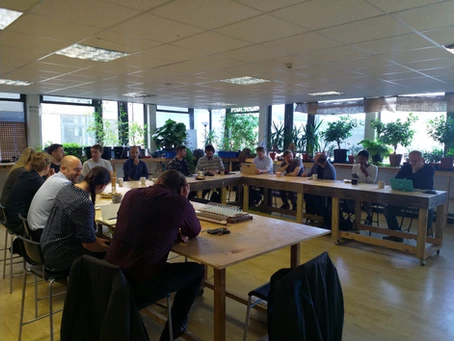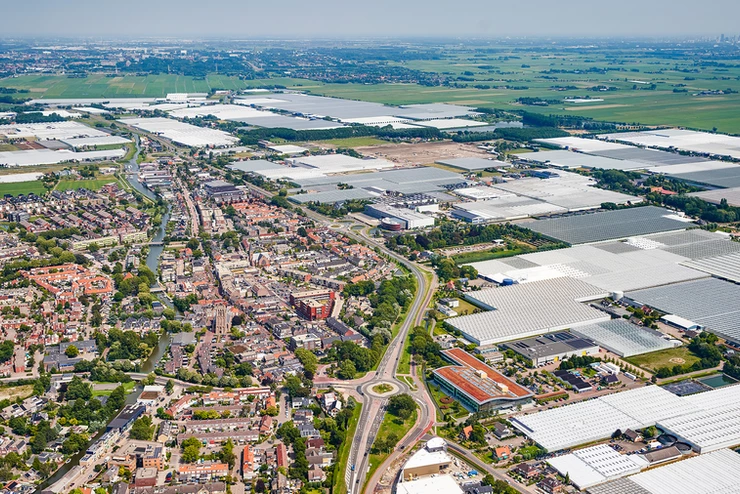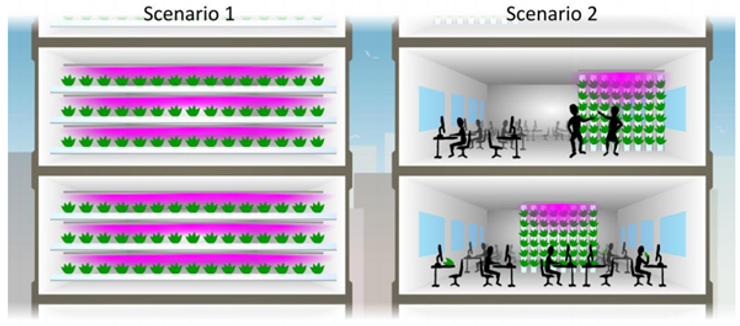We believe that there is a clear need for Urban AgriTech in the UK, and we intend to advocate for that and to show clearly how it can help the UK to develop better food systems for all.
The only constant is change. It’s a truism, but the outcomes are profound. For an example, you only need to look at Brexit in the UK. Whatever your political opinion on the European Union, it is undeniable that the world is, in many ways, radically different to how it was four decades ago when we joined the Common Market. The effects of this change are immensely complex and no one really knows how it will all turn out in the end.
Brexit is also in many ways a response to global issues. There are challenges at this level, which the UK shares with all nations, from economics to technology to climate change. These global challenges are, if anything, even more complex than Brexit and frequently much less well addressed. Moreover, the pace of change is accelerating as the years go by. So, in turn, the complexity and the potential for unintended consequences grows exponentially.
It is a simple fact that food systems are a fundamental part of any society, any civilisation. So it follows that food systems must both deeply affect and be affected by this change, this complexity and the resulting challenges.
We can see a good example of this in agriculture, in the form of the Green Revolution (which happens to align reasonably well in terms of time-frame with the UK’s membership of the EU). While this revolution brought high yields and an era of cheap plentiful food, we now see the problems around soil health, biodiversity, chemical run off and so on.
Another example is in the globalisation of our food systems, which has again aided the supply of cheap and plentiful food (at least in the western world), but is deeply vulnerable to system shocks, affecting supply and price and has had negative, exploitative impacts in the regions where it is produced.
With climate change looming and threatening to fundamentally change where and how we can grow our food, the need for sustainability and resilience in our food systems can hardly be overstated.
The combination of these many factors, while complex and difficult to predict, does put the UK in an interesting position. In fact, it demands that we take a long, hard, detailed look at our food systems, and figure out exactly what we want from them, and how to achieve that. Fortunately, this is something that is indeed happening.
For example, exit from the EU would mean exit from the Common Agricultural Policy (CAP). This is a policy with many problems, to say the least. But more importantly, it means we have to decide what we will subsidise and how. There has been a great deal of talk about providing subsidies for ecosystem services, instead of simply per area of land. Doing this would challenge many of our current food producers pretty deeply. Similarly, there is recognition that we import too much of our food and that this makes our food supply vulnerable.
Addressing this latter problem also aligns quite neatly with emerging consumer preferences. Consumers are increasingly aware of the source of their food, and there is increasing demand for local food. There is also an awareness of the benefits to health of having fresh and healthy local food available to all. This of course will also have occured to policymakers, so there is the potential for alignment between consumer preferences and government policy.
At the opposite end of the scale, we have a serious health problem in this country around nutrition – particularly micro-nutrients – and around obesity and cardiovascular health. Availability of fresh, healthy food is vital to this, as is education. The goal is to make sure people know what is healthy and are able to make good choices and act upon them affordably.
Perhaps above all, we have to achieve all of this while also reducing our water use, our resource use, our waste and our carbon footprint. Achieving all of this is going to take an immense amount of work. So it’s heartening to see that work getting under way. For example, the UK government has recently announced the development of a National Food Strategy. This is one of several such initiatives at national level, and of course many more are taking place at local and city level.
So how does Urban Agritech (UAT) fit into all this? The first and most important thing is to recognise that there is no one-size-fits-all solution to the many challenges we face with our food systems. But, UAT is one tool in the box, that could potentially provide a number of major benefits.
The primary purpose of UAT is to grow fresh local produce. The amount of crops that can be grown is increasing all the time, and much research and development work is still needed to drive that further. But for now, we can grow many types of salads, leafy greens, herbs, vine crops and soft fruits. In light of the above challenges it is clear that technology assisted growing methods offer substantial benefits.
First of all, we can reduce our reliance on imports. The UK currently imports the majority of its fresh produce. This makes us vulnerable to supply and price shocks, as has happened with both heatwaves and cold snaps in the past few years across Europe. It also requires substantial shipping, with the carbon footprint that entails, and the loss of freshness. UAT can therefore help to increase the resilience of our fresh produce supply while also providing fresher, healthier and tastier products.
Second, Controlled Environment Agriculture (CEA), which is the pre-eminent type of UAT, can substantially reduce our use of water and resources, both by reducing our food miles and by the precision nature of these growing systems. It also eliminates the need for pesticides and herbicides, minimises the use of fertiliser, and with no run-off and waste.
Third, by being in urban and peri-urban areas, where the majority of people are located, such growing systems can serve an important function of public outreach and education. CEA systems in schools could help pupils learn not only where their food comes from and but also about healthy eating. They also take up a small area and don’t require outside space to grow. Placed within the NHS, they could contribute to the healthy recovery of patients and contribute to proactive health management for those at risk.
Finally, because such systems usually require much less space – particularly in the case of Vertical Farming systems – there is the potential to free up land for other uses, whether that be sustainable growing systems such as agroforestry or simply rewilding the land to let nature do the work. The benefits of this include biodiversity and carbon management, along with the ecosystem services that nature offers for free, such as flood management.
So there is a clear case for UAT and CEA to be a part of our future more sustainable and resilient food systems. UK Urban AgriTech (UKUAT) was founded to bring together the leading companies, institutions and individuals working on this in the UK. Our mission is to mobilise the UK industry towards these goals, to amplify our collective voice to gain recognition and to support and generate collaborative projects that will drive further development and advancement of our industry.
This post was originally published here: https://chap-solutions.co.uk/blogs/what-next-for-uk-urban-agri-tech/




